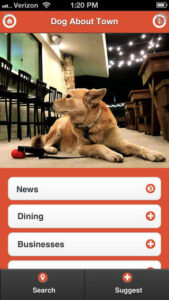Once publishers have an idea of the potential audience segments for niche apps in their market, they need to look internally at the resources and expertise they have (or don’t have) to meet those needs.
One way to start with small, cheap experiments to test these niche markets is to make use of the content and knowledge that an organization already has in house. Later they may choose to make a greater investment, but for now it is best to try to limit the upfront cost and risk.
Just as publishers must examine their community to identify audience passions, look around your own company to identify the experience and passions in the newsroom, the IT department, marketing and elsewhere.
What does the newsroom already cover very well that could be repurposed for a niche audience? Do you have star reporters or columnists with whom loyal readers might want deeper engagement via a new niche product?
The Hip Hops app in St. Louis is an example of this — without a popular beer columnist like Benn already on staff, it would have been much harder to create this app. The McClatchy state capital apps are possible because the newsrooms had decades of staff experience covering state politics.
Publishers should keep in mind they may also uncover some internal expertise that has nothing to do with a person’s day job or beat assignment. At the Dallas Morning News, for instance, copy editor Tatia Woldt loves taking her dog along whenever she goes out and accumulated encyclopedic knowledge of which local businesses were dog-friendly.
Woldt had started writing a column on the topic, and Jennifer Okamoto, the company’s senior product manager, drew on Woldt’s knowledge to create a niche mobile app called DFW Dog About Town.
“Finding hidden talents in the staff and making the most of them is wonderful. Fortunately, we have a number of people on staff who have done that for me,” Okamoto said.
Dog About Town is a guide to more than 450 spots where people can bring their dogs with them while running errands or hanging out. It uses the phone’s location data to find nearby locations quickly. It’s one of about a dozen niche apps the Morning News has created, many of which involve listings of place to eat or visit.
“To me, one of the big opportunities we have is connecting those dots between lists of events and places with the customer’s location and schedule,” Okamoto said. “That could be events and places for dog lovers or it could be historical monuments for tourists, or stores with big sales for shoppers. To some extent, it could even be local politics or crime news, although that’s harder to work with.”
Once you’ve identified your staff’s strengths, it’s time to make some decisions.
Where do your organization’s internal strengths overlap with the community’s greatest passions? In business terms, where are you capable of increasing supply to meet the audiences demand for additional information?
Take those topics, and circle the ones that have user needs related to timeliness, convenience, personalization or location. Those are some of the needs mobile products can address better than other platforms.
Now you’re ready to start designing and building.
Share with your network
- The best strategies for creating specialized mobile apps
- Draw upon your community’s passions to design niche mobile products
- Draw upon your staff’s passions to create niche mobile products
- Adopt a user-centered design process to plan your niche mobile app
- Unleash your hacker culture to get an app built
- Make room for ‘beta’ app experiments to grow
- Obstacles you will face in creating niche mobile apps
- Strategy worksheet: Your niche mobile app plan
You also might be interested in:
Successfully and efficiently marketing your work can be hard, especially for local news teams with limited resources, but marketing yourself to your audience is an essential skill for news organizations to drive revenue and promote sustainability.
As news teams begin thinking about their election coverage plans, it may feel like adding more tasks to an already full plate, with a fraction of the staff and resources they once had. But that doesn’t have to mean figuring out how to do more with less — maybe it’s doing less with less.
We reached out to Danielle Coffey, the CEO of American Press Institute’s parent corporation, the News/Media Alliance, to learn more about the legal fight for news organizations’ rights with AI.



